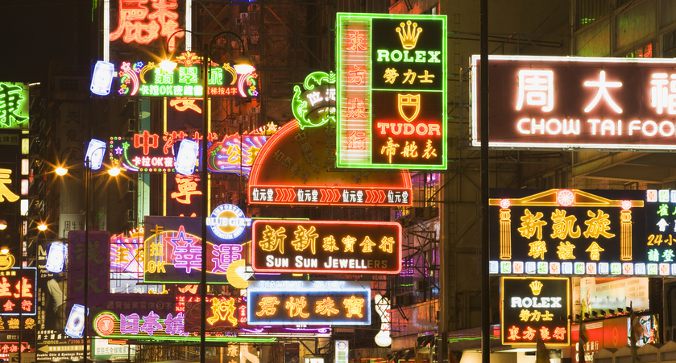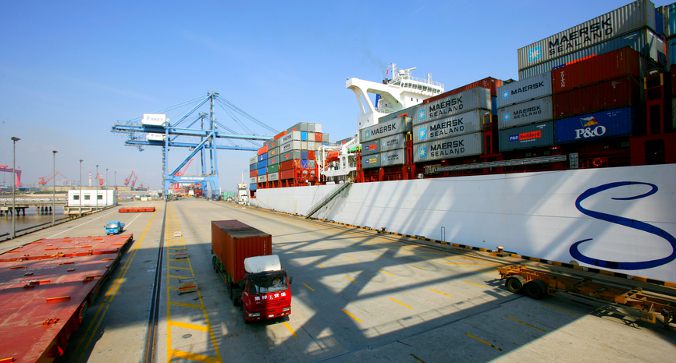
Since we started to publish articles related to business with Asia, “Can you tell me more about exporting to Asia?” has become one of the most common questions people address to me. Thus I asked Fredrik Grönkvist, my business partner on several project not related to this website, to write an overview on the best strategies a small business can use to start exporting its goods to Asia. He’s an expert on the topic and I find the article quite useful. Enjoy!
There’s been a lot of hype surrounding Asia as an emerging market in the last years. While large corporations such as Apple, GM and LVMH are making billions of dollars in the far East, there are rather few success stories when it comes to smaller businesses. While there may be various reasons for this, I am still convinced that small businesses in Europe and America could do a lot better. Let’s forget about over hyped macro economic data (it doesn’t relate to your business anyway) and look into this from a more practical perspective.
That is let’s look at the strategies a small business can apply for exporting its products in China or, more in general, in Asia.
Products, quality and pricing
First of all, forget about competing on price. It’s not possible to compete with suppliers in China, Cambodia and Vietnam on this factor. Not only do these countries have a huge pool of cheap labor, but due to proximity they can also offer shorter delivery times and lower shipping costs.
That being said I’ll move on to what really matters. You may have read that large companies such as H&M and Luis Vuitton have made huge profits on the Asian markets in the last decade. While this is not directly relevant to small businesses, I want to underline that the market is indeed large enough to fit more than these giants.
Possibly due to a lack of confidence and knowledge, many small businesses tend to assume that showcasing a brand is only useful when it’s already established. This is wrong. A brand, regardless of when it was established, can result in a major increase of a products value. I have a background in managing outsourced production in China and branding is a key strategy for increasing the perceived value when importing products. This is even more important when exporting products to Asia. Since you can’t compete on price, you must compete on quality and perceived value. This is why a brand is a key factor for any western company that aims at exporting to Asia.
While there’s a lot of hype about the “decline of the West” – I beg to differ, – Asian consumers are in general considering western products to be of higher quality and value than local brands (with the exception of Japanese and Korean products that also tends to be of an excellent quality). A common tactic is therefore simply to exploit the country where your products are made. “Made in Italy” or “Made in France” can add a ton of status to a product, even if it’s not an established brand.
There are actually a few reasons for small manufacturing enterprises and trading companies in Europe and America to feel more confident than ever. People all over the world are getting fed up with mass market products that makes us all look like clones. There are indeed countless of success stories involving small consumer product brands that gain a following simply because they are not mass market products. While Asia as a whole still needs some time to catch up on this trend, I’d say that the younger crowd in countries and regions such as Japan, Singapore, Hong Kong, Taiwan, South Korea and China are hungry for new brands.
Finding buyers
There are various ways to find Asian buyers. But first you must have an idea of what kind of buyers you want to target. Keep in mind that large retailers are already sourcing products on a global scale, and while you shouldn’t hesitate to contact them, I’d say that you are more likely to be successful by targeting local stores and e-commerce websites.
There are various online directories available. However, Google and Yahoo might prove much more useful when looking for Asian companies to sell your products to. Try to narrow down your searches into specific cities and districts. If you’re selling handmade gloves your Google search could look something like this: “winter apparel stores Osaka X district”. The companies that are already dominating the search engines for major keywords such as “winter apparel” are quite likely to be bombarded with offers on an almost daily basis. Go local!
“Which Asian countries should we focus on?”
This is a very important question when exporting to Asia. Like most things in the modern world, the concept of “Asia”, is a European invention that roughly translates into “the rest of the world”. What I’m trying to say is that you can’t really “Export to Asia”; instead, you shall target specific regions of Asia.
Asia is a large and diverse continent. There are world leading and highly developed countries such as Japan and Singapore, but also rather poor and undeveloped countries such as Cambodia, Vietnam and, to a large extent, China.
Selling to developing countries is a big challenge, too big of a challenge for most small businesses. Therefore I suggest that you begin with targeting the developed parts of Asia that includes the following countries and regions:
1.) Japan
2.) South Korea
3.) Singapore
4.) Taiwan (Republic of China)
5.) Hong Kong (Peoples Republic of China)
You might wonder why I’ve left out Mainland China. Simply because I think it’s too hard for the average small exporter to access this market. China is still very regulated, and especially when it comes to imports. While I do suggest you should give cities like Shanghai, Shenzhen, Guangzhou and Beijing a try later on, it’s not the easiest market to access.
Managing sales
Assuming that you have a product to sell, the next step is to get in touch with buyers. The main obstacles when sourcing potential buyers in Asia is the language. The English proficiency in Asian nations such as Japan and South Korea is still very low (Hong Kong and Singapore represent the only exception). You’ll end up missing a lot of business opportunities if you don’t adapt your strategy to local conditions.
Firstly, you’ll need to hire somebody who is fluent in the language of the country you’re targeting: you can find thousands of cheap Japanese, Chinese and Korean speaking freelancers on websites such as Odesk and Elance. However, keep in mind that these freelancers are not experts on your products and the intended market. In order to bridge that gap I highly recommend that you establish clearly defined business processes and provide your freelancer with all the sales material (i.e. PDF brochures) that might be needed.
You should also try to walk a mile in your potential buyers shoes. Some of them may never have imported products before and international trade is not that easy to manage for those without prior experience. In order to reduce the amount of uncertainty, I advise you to clearly specify the following:
1.) Pricing (for various quantities).
2.) Delivery time (to various countries).
3.) Payment terms.
4.) Delivery terms.
5.) Replacement terms (of defective or damaged products).
Uncertainty can be stressful in business and especially so for small companies. Asian businesses aren’t different in that sense and a clear policy that makes the buyer feel safe is certain to increase your chances of making a sale.
“Do I need to register a company in the country I want to export to?”
No, you don’t. You’re free to receive payments to your existing company account and sell from where you are now. However, if you see that your sales are growing then it can be a great idea to set up a local company entity. Why? Because for your buyers will be more convenient to pay a local entity and this single factor can differentiate yourself from competitors and, more in general, have a big impact on your sales in Asia.
While most countries in the region are still heavily regulated, there are two beacons of light: Hong Kong and Singapore. These two city states (well, Hong Kong is not a country but a Special Administration Region in the P.R. of China) are constantly taking the top spots in the yearly “ease of doing business” rankings and setting up an offshore entity in either Hong Kong or Singapore is easy.
Are you planning to export your products to Asia? If you have a comment or a question you can let us a message using the comment box below or sending us an e-mail. We’ll get back to you as soon as possible!
Photo Credits: Photos by Sapore di Cina




Thinking about how to grow your business and wanted to increase international sales. PSD global an International Consulting Firm will help you in this. We helping growing firms accelerate their international sales and business development objectives. We also assist Trade/Investment Promotion agencies broaden their trade development and investment attraction footprint by providing business matchmaking, trade promotion, and lead generation services.
Is there a source for vetting the legitimacy and honesty of specific companies in China? For example, we would like to gather information about a company named Shanghai Huayuan International Trade Co. Ltd. Any guidance you can provide would be helpful.
Thank you.
Hi Judy, yes there is! Is called “Supplier Screening”, here you can find more information: http://www.chinaimportal.com/supplier-screening/
Dear Furio:
Many thanks for your reply. I was probably not specific enough in my query. We are considering exporting to a company in China (an online retailer). So this company is not a supplier, but would be reselling our products. Is there a way to verify the honesty and legitimacy of a Chinese corporate buyer? Also, is there a free screening source? Again, thank you so much for responding.
Yes, you can “screen” a company by yourself, if you want it for free. You better speak Chinese and know what to do though : )